.01
Marsaxlokk
Marsaxlokk village is located in the south-eastern part of Malta which is famous for its big Sunday fish market and its many decorative “eyed” painted boats called ‘Luzzus’. The name Marsaxlokk comes from the word “marsa” which means port and the word “xlokk” which means south in Maltese. Marsaxlokk has an old history dating back to the ninth century BC. It was in this bay that the first Phoenicians arriving in Malta landed and set up their businesses. It was here that the Turkish fleet anchored during the Great Siege in Malta. The popular fish market attracts hundreds of locals and tourists who are interested in buying the freshest catch of the day. Although the Marsaxlokk Sunday Market was originally a fish market, it has developed and now also sells locally produced honey, fruit jams, wine as well as vegetables, souvenirs and clothes.

.01
Marsaxlokk
Marsaxlokk village is located in the south-eastern part of Malta which is famous for its big Sunday fish market and its many decorative “eyed” painted boats called ‘Luzzus’. The name Marsaxlokk comes from the word “marsa” which means port and the word “xlokk” which means south in Maltese. Marsaxlokk has an old history dating back to the ninth century BC. It was in this bay that the first Phoenicians arriving in Malta landed and set up their businesses. It was here that the Turkish fleet anchored during the Great Siege in Malta. The popular fish market attracts hundreds of locals and tourists who are interested in buying the freshest catch of the day. Although the Marsaxlokk Sunday Market was originally a fish market, it has developed and now also sells locally produced honey, fruit jams, wine as well as vegetables, souvenirs and clothes.
.02
Blue Grotto
From the typical Mediterranean inlet of Wied Iz-Zurrieq, visitors can catch small fishing boats to the Blue Grotto and the other small caves along the way. The Blue Grotto itself is an enormous arch which covers the inlet to a deep cave system. The water here is so clear that despite the depth, the sea floor appears to be only under a few metres of water. The best time to visit is before mid-morning when the sun shines directly into Grotto. At this time of the day, if you put your hands into the water they will turn florescent blue. The trip also visits several other caves depending on the weather including Honeymoon Cave, Reflection Cave and Cat’s cave. The Blue Grotto is definitely a Top 10 Malta site.
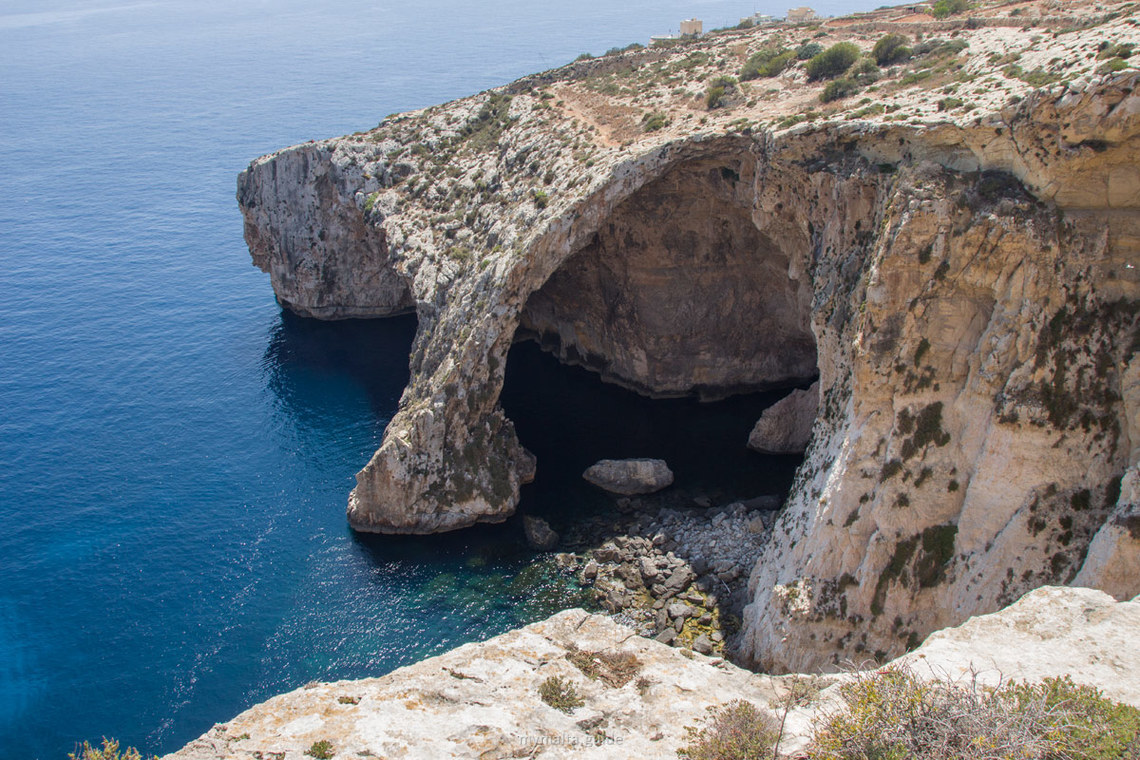
.02
Blue Grotto
From the typical Mediterranean inlet of Wied Iz-Zurrieq, visitors can catch small fishing boats to the Blue Grotto and the other small caves along the way. The Blue Grotto itself is an enormous arch which covers the inlet to a deep cave system. The water here is so clear that despite the depth, the sea floor appears to be only under a few metres of water. The best time to visit is before mid-morning when the sun shines directly into Grotto. At this time of the day, if you put your hands into the water they will turn florescent blue. The trip also visits several other caves depending on the weather including Honeymoon Cave, Reflection Cave and Cat’s cave. The Blue Grotto is definitely a Top 10 Malta site.
.03
The Tarxien Temples
The Tarxien Temples, believed to date from between 3,600 to 2,500 BC, are amongst the most important evidence of ancient cultures which once inhabited Malta. The temples site, now surrounded by urbanisation, was discovered by a farmer in 1915. In one of the temples a huge statue of a reclining woman was found (the original is now housed in the National Museum of Archaeology in Valletta) which is one of the world’s earliest known representation of a deity. The statue is considered to be that of a fertility goddess. There are four linked temples with massive stone blocks up to 3 metres by 1 metre by 1 metre in size.

.03
The Tarxien Temples
The Tarxien Temples, believed to date from between 3,600 to 2,500 BC, are amongst the most important evidence of ancient cultures which once inhabited Malta. The temples site, now surrounded by urbanisation, was discovered by a farmer in 1915. In one of the temples a huge statue of a reclining woman was found (the original is now housed in the National Museum of Archaeology in Valletta) which is one of the world’s earliest known representation of a deity. The statue is considered to be that of a fertility goddess. There are four linked temples with massive stone blocks up to 3 metres by 1 metre by 1 metre in size.
.04
Vittoriosa
Vittoriosa is the most popular of the Three Cities with tourists, with chic restaurants and eateries lining the seafront and a fine modern yacht marina which often moors the super yachts of the rich and famous. Vittoriosa’s primary attraction is the awe-inspiring Fort St Angelo and its adjacent fortifications, but there is so much more to discover in this small little city. This compact city has intimate winding streets with traditional Maltese houses, some of which are adorned in their frontage with pot plants. Many of the Three Cities historical buildings are located in Vittoriosa including the auberges (residences) of the different langues of the Knights of St. Johns, the Sacra Infermeria, the Maritime Museum, and the Inquisitors Palace.
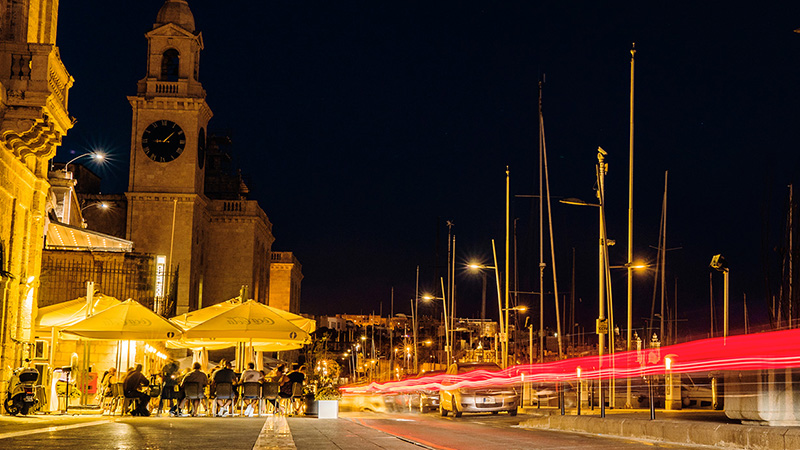
.04
Vittoriosa
Vittoriosa is the most popular of the Three Cities with tourists, with chic restaurants and eateries lining the seafront and a fine modern yacht marina which often moors the super yachts of the rich and famous. Vittoriosa’s primary attraction is the awe-inspiring Fort St Angelo and its adjacent fortifications, but there is so much more to discover in this small little city. This compact city has intimate winding streets with traditional Maltese houses, some of which are adorned in their frontage with pot plants. Many of the Three Cities historical buildings are located in Vittoriosa including the auberges (residences) of the different langues of the Knights of St. Johns, the Sacra Infermeria, the Maritime Museum, and the Inquisitors Palace.
.05
Hal Saflieni Hypogeum
The Hypogeum is Malta’s unique underground temple complex, discovered by chance in 1902 when builders were preparing a building site in Paola. Covering some 500 sq metres it comprises a labyrinth of halls, corridors and chambers on three levels cut from the limestone around 4,000 to 5,000 years ago. This was a place of both ancient worship and burial and at the lowest level of the complex a chamber was found containing the remains of around 7,000 bodies. One chamber, known as the Oracle Chamber, allows a strange phenomenon – it will magnify male voices around the complex but not female voices.
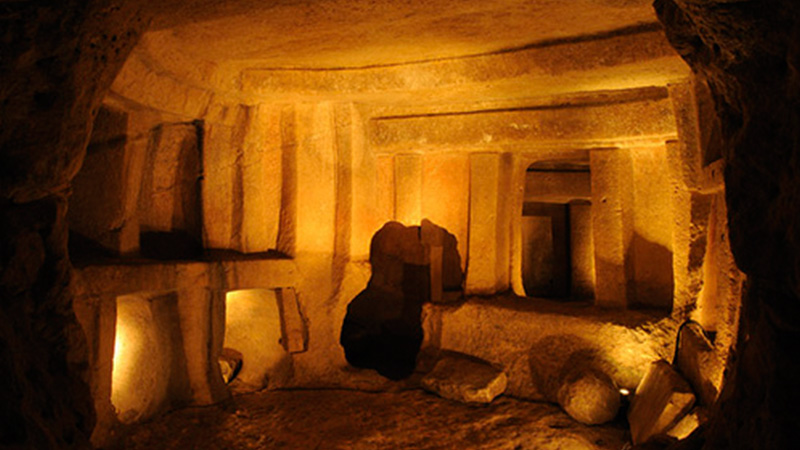
.05
Hal Saflieni Hypogeum
The Hypogeum is Malta’s unique underground temple complex, discovered by chance in 1902 when builders were preparing a building site in Paola. Covering some 500 sq metres it comprises a labyrinth of halls, corridors and chambers on three levels cut from the limestone around 4,000 to 5,000 years ago. This was a place of both ancient worship and burial and at the lowest level of the complex a chamber was found containing the remains of around 7,000 bodies. One chamber, known as the Oracle Chamber, allows a strange phenomenon – it will magnify male voices around the complex but not female voices.
.06
Peter's Pool Rocky Beach
This stunning rocky part of the shore provides a quiet spot for swimming and sunbathing. Peter’s Pool at Delimara is 20 min away by foot. Peter’s Pool is excellent for diving, snorkeling and cliff jumping down into the natural pool. The smooth, weathered limestone ledges make good sunbathing spots at Peter’s Pool. Don’t miss the saltpans that can be seen at this location.
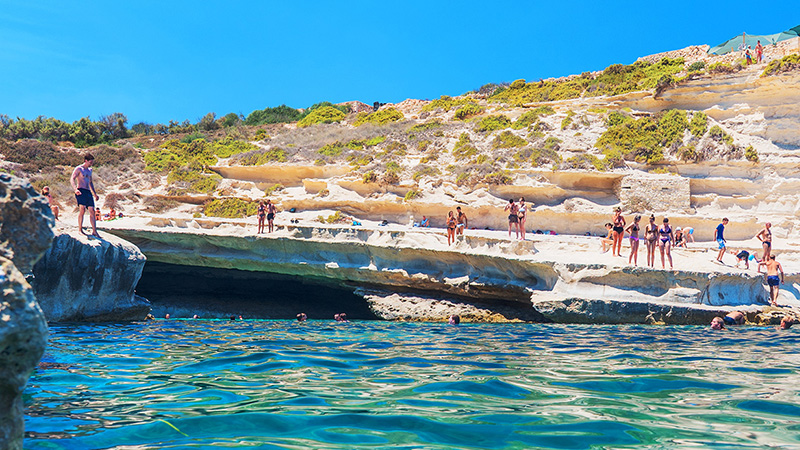
.06
Peter's Pool Rocky Beach
This stunning rocky part of the shore provides a quiet spot for swimming and sunbathing. Peter’s Pool at Delimara is 20 min away by foot. Peter’s Pool is excellent for diving, snorkeling and cliff jumping down into the natural pool. The smooth, weathered limestone ledges make good sunbathing spots at Peter’s Pool. Don’t miss the saltpans that can be seen at this location.
.07
Filfla
Filfla is a small, mostly barren, uninhabited islet 5 kilometres (3.1 miles) south of Malta, and is the most southerly point of the Maltese Archipelago. Filfoletta or Filflett, a small rocky islet some 102 metres southwest of Filfla, is the southernmost point of Malta. The name is believed to come from the word ‘filfel’, Arabic for peppercorn. The island is uninhabited except for a unique species of lizards that live there. When Malta was a British colony, the island of Filfla was used for target practice by the British Armed Forces. The island is now protected under Maltese law.
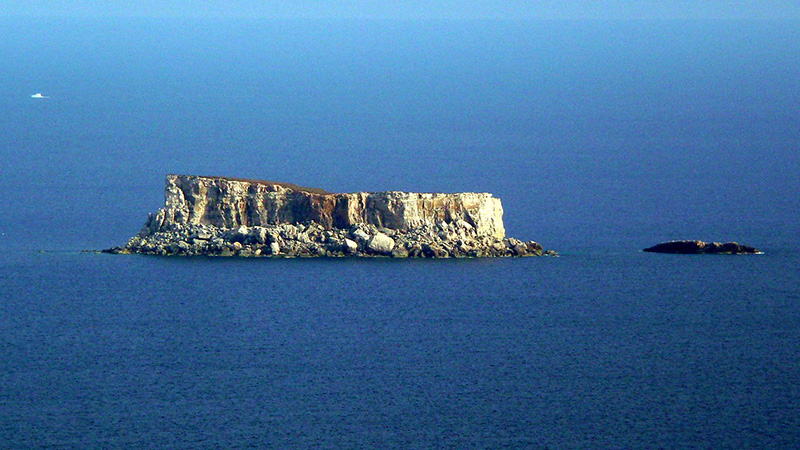
.07
Filfla
Filfla is a small, mostly barren, uninhabited islet 5 kilometres (3.1 miles) south of Malta, and is the most southerly point of the Maltese Archipelago. Filfoletta or Filflett, a small rocky islet some 102 metres southwest of Filfla, is the southernmost point of Malta. The name is believed to come from the word ‘filfel’, Arabic for peppercorn. The island is uninhabited except for a unique species of lizards that live there. When Malta was a British colony, the island of Filfla was used for target practice by the British Armed Forces. The island is now protected under Maltese law.
.08
Senglea
Senglea, or Isla, is the smallest of the Three Cities and the most densely populated village in Malta. The old city is situated on a peninsula protruding into the Grand Harbour, facing the charming walled city of Valletta. This old city is more than a place adorned with character and heritage. Life flows through its narrow streets amongst its aged buildings. Many activities take place within the city, amongst them the popular Regatta (traditional boat race) which take place on the waters of the Grand Harbour on the 8th September.
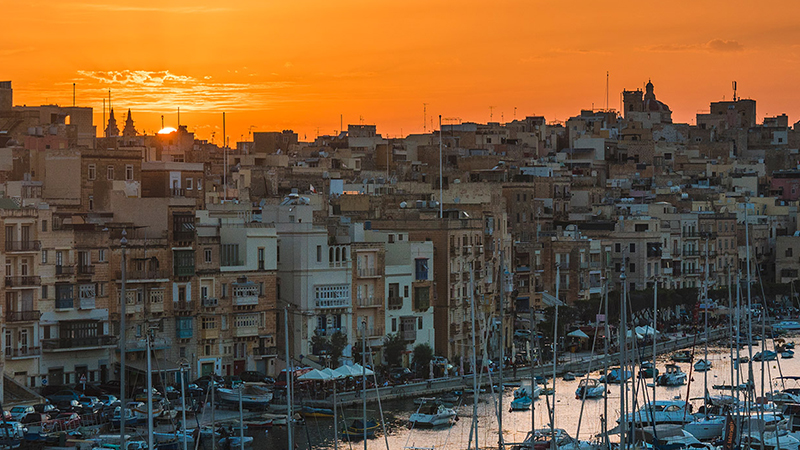
.08
Senglea
Senglea, or Isla, is the smallest of the Three Cities and the most densely populated village in Malta. The old city is situated on a peninsula protruding into the Grand Harbour, facing the charming walled city of Valletta. This old city is more than a place adorned with character and heritage. Life flows through its narrow streets amongst its aged buildings. Many activities take place within the city, amongst them the popular Regatta (traditional boat race) which take place on the waters of the Grand Harbour on the 8th September.
.09
Fort St. Angelo
Fort St. Angelo is the crowning glory of the Three Cities and of Grand Harbour itself. This Majestic Fortress is impressive from whichever vantage point you see it around Grand Harbour. Positioned at the very tip of the Vittoriosa peninsula It is believed that the Phoenicians had erected a temple on the site but the fort itself was built by Grand Master L’Isle Adam soon after the Knights of St John arrived in Malta in 1530, he knowing with certainty that it was only a matter of time before their old foe the Ottomans would pursue them to Malta. The Fort became the Knights headquarters and was a focal point of one of the most epic and bloody battles in history. The fort was restored in the 17th century before falling into disrepair. During World War II the Fort suffered an estimated 70 direct bomb hits. In recent years the magnificent fort has been restored to its former glory.
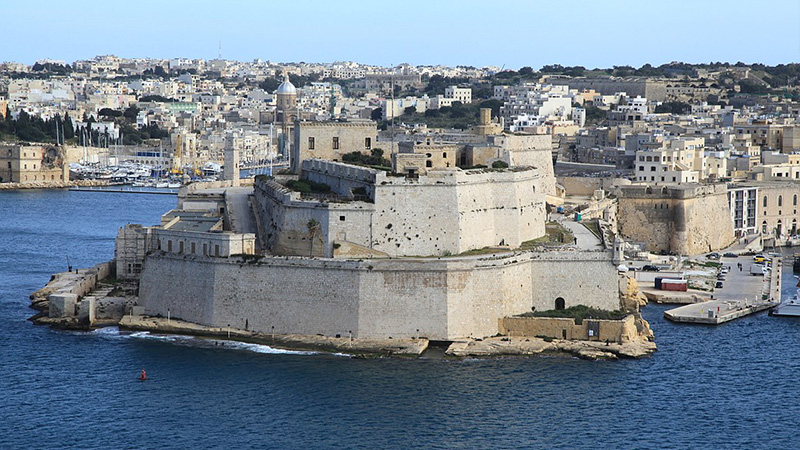
.09
Fort St. Angelo
Fort St. Angelo is the crowning glory of the Three Cities and of Grand Harbour itself. This Majestic Fortress is impressive from whichever vantage point you see it around Grand Harbour. Positioned at the very tip of the Vittoriosa peninsula It is believed that the Phoenicians had erected a temple on the site but the fort itself was built by Grand Master L’Isle Adam soon after the Knights of St John arrived in Malta in 1530, he knowing with certainty that it was only a matter of time before their old foe the Ottomans would pursue them to Malta. The Fort became the Knights headquarters and was a focal point of one of the most epic and bloody battles in history. The fort was restored in the 17th century before falling into disrepair. During World War II the Fort suffered an estimated 70 direct bomb hits. In recent years the magnificent fort has been restored to its former glory.
.10
Ghar Dalam
Għar Dalam means ‘cave of darkness’ in Maltese. The cave is 145-metre cavity of which the first 50 metres publicly accessible. The animal bones found within are evident proof that Malta was once linked to Sicily and to mainland Europe by a land bridge. A huge number and variety of paleontological treasures have been unearthed from Għar Dalam, including the remains of dwarf elephants and hippopotami. These animals were trapped in Malta during the ice age when the sea-level rose to isolate the country from Sicily. The marooned animals subsequently evolved to smaller size in order to adapt themselves to a more limited food-supply. The cave has also surrendered the remains of bears, wolves, micro-mammals and giant flightless swans.
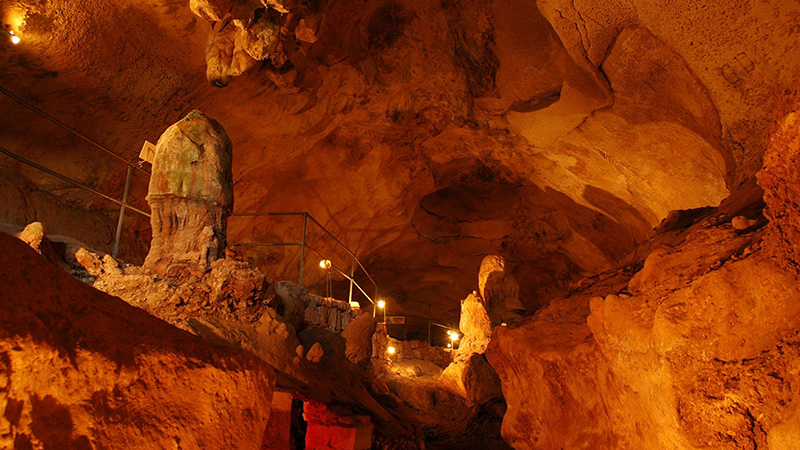
.10
Ghar Dalam
Għar Dalam means ‘cave of darkness’ in Maltese. The cave is 145-metre cavity of which the first 50 metres publicly accessible. The animal bones found within are evident proof that Malta was once linked to Sicily and to mainland Europe by a land bridge. A huge number and variety of paleontological treasures have been unearthed from Għar Dalam, including the remains of dwarf elephants and hippopotami. These animals were trapped in Malta during the ice age when the sea-level rose to isolate the country from Sicily. The marooned animals subsequently evolved to smaller size in order to adapt themselves to a more limited food-supply. The cave has also surrendered the remains of bears, wolves, micro-mammals and giant flightless swans.